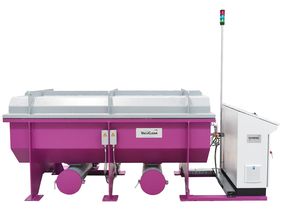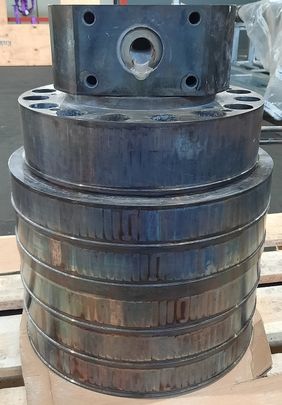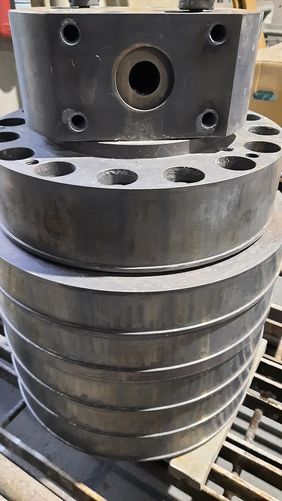The demand for specialty medical films is high worldwide - especially in these times when the current corona pandemic is keeping the world on pause. Many plastics processing companies are manufacturing product around the clock, including the German company Polycine. The specialist for pharmaceutical packaging solutions is a global leader in the production of PP-based, flexible non-PVC packaging of the highest quality. To guarantee this, Polycine's 24/7 production operation relies above all on flawless and clean machine parts, which must be regularly cleaned without leaving any residues. This is where Schwing Technologies comes into play. The expert for thermal cleaning solutions offers reliable and environmentally friendly processes, specifically for cleaning the blown film dies and tubing die heads used by Polycine. Schwing sells its green cleaning technology worldwide and maintains a 24/7 cleaning and delivery service at its German site in Neukirchen-Vluyn in the Lower Rhine region.
Thermal cleaning
Polycine, based in the German city of Schiffweiler in Saarland state, primarily produces for the highly sensitive medical and pharmaceutical sectors. These include three-layer APP films and tubes, which are used as primary packaging in medical technology. They directly surround pharmaceutical or medical products. Therefore, these films and tubing must be produced in a high-class cleanroom environment and from medically flawless raw materials. "We monitor and control the entire production process online to ensure the highest product quality," emphasizes Gert Klemann, Polycine's technical manager. "In doing so, we follow GMP standards that safeguard production in the pharmaceutical environment." The production facility's quality assurance system also meets ISO 9001 requirements, Klemann adds.
High requirements
To ensure this high level of quality, the company uses Schwing's safe and reliable technology to clean its film and tubing blow heads. Thermal cleaning in a vacuum pyrolysis system (VACUCLEAN) removes adhering polyolefins without leaving any residue. The result is clean channels that guarantee consistent flow behavior of the melt and avoid cross-contamination by foreign material. Compared to mechanical cleaning methods, the use of cleaning granules, chemicals, welding torches or flames, there are significant advantages. Klemann says: "The blown film die head can be cleaned assembled then dismantled with minimal effort and without any damage." In addition, environmental aspects play an important role, as Polycine is also concerned about protecting the environment. "If the machine parts are additionally protected, all the better," says Klemann.
Routine cleaning process
A total of six blown film dies and two tubing die heads are regularly used in the company. How often they are cleaned depends on the individual production orders, explains the technical expert - there is no specific cleaning interval. This makes the flexible cleaning service with Schwing all the more attractive to him. Within just two to three days, he can return the parts to the production process. This significantly reduces costs due to maintenance, plant downtime and production losses. When it is time for cleaning, Klemann and his team determine beforehand based on material quality, flow behavior and material analyses. "The blown film die head is disassembled in our plant, prepared for shipment and picked up by Schwing. After cleaning in the pyrolysis, disassembly and reworking, the blown film die head is reassembled and transported back," explains Klemann. Following the external inspection, the Polycine team checks the screws for torque and reassembles the blown film die head in the production line. Then, the blown film die head is flushed with pure material and the melt is checked for purity and foreign material. If everything is in order, the line goes into production. "Regular cleaning protects against production downtime and increases productivity - it pays off for us," Klemann concludes.
Operating principle of vacuum pyrolysis
During thermal cleaning with a Schwing vacuum pyrolysis system, the assembled multi-layer blow head is processed in a VACUCLEAN system. The systems clean multi-layer blown film die heads with a diameter of up to 1.70 meters and a weight of up to twelve tons. First, the remaining plastic inside the blown film die head is gently melted off under vacuum. In a second cleaning phase, remnants of the plastic still adhering are further heated up to approximately 450 °C. In a fully automatically controlled and electronically logged pyrolysis process, the plastic is then decomposed and oxidized with the successive addition of oxygen. A sophisticated sensor system controls the cleaning process, so excessive temperatures cannot occur at any time. Inorganic residues can be easily removed in a post-treatment step, e.g. with compressed air.



